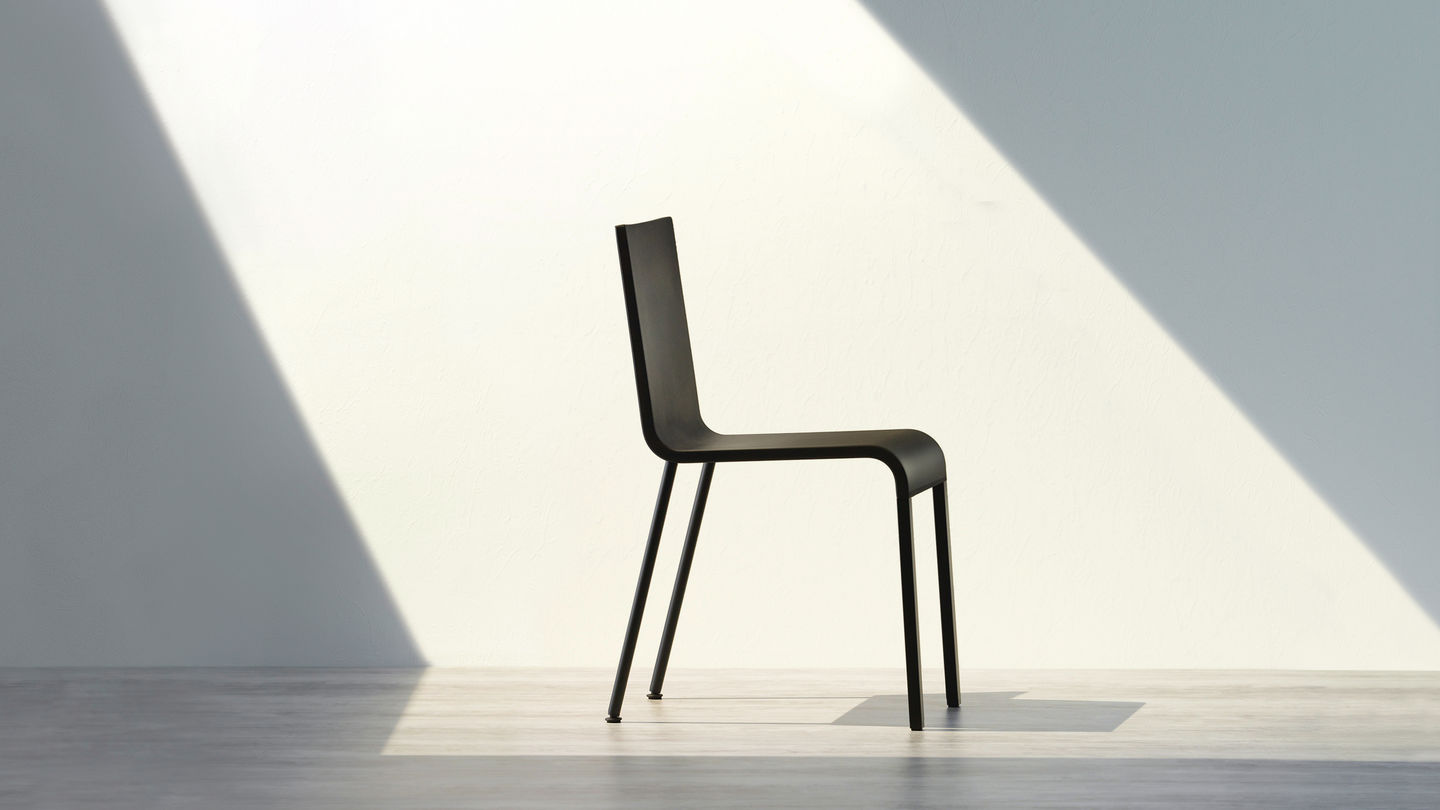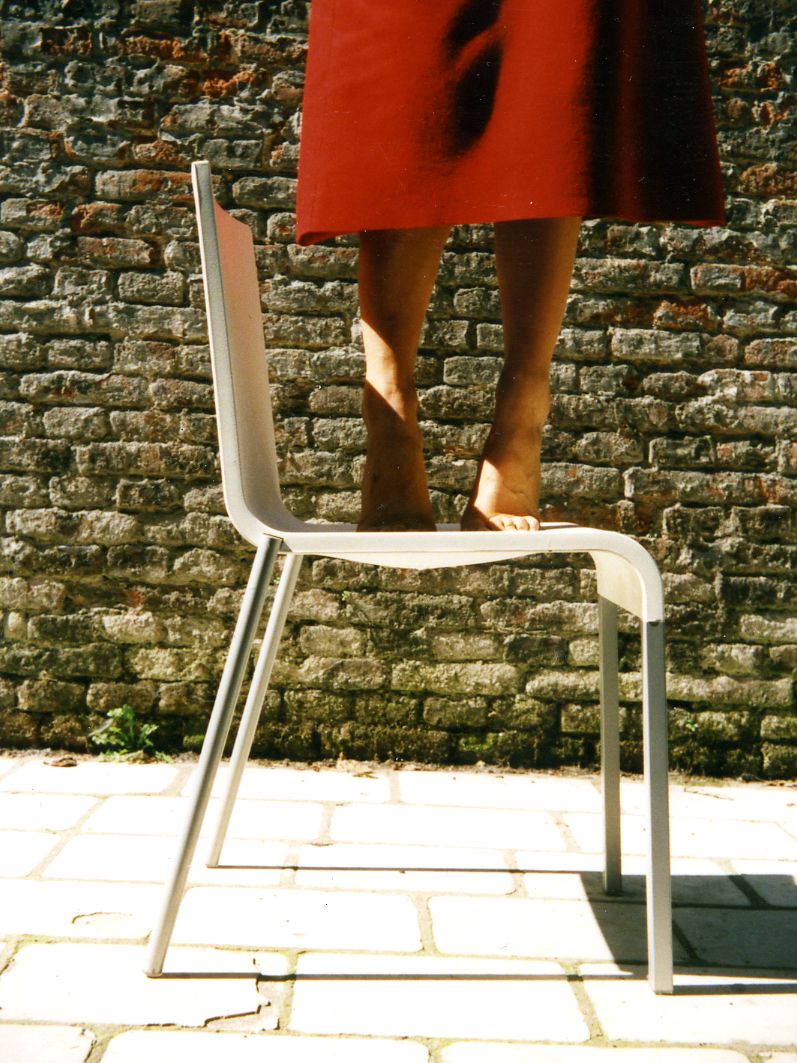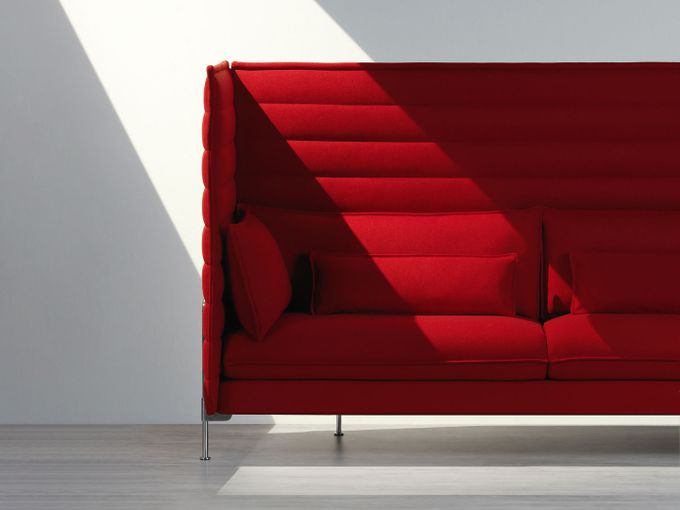When a visit changes everything.
.03
The story of a Vitra original

‘The design starts with a memory. I want to be able to understand the space. Master it. I think it’s important that you have it within you – it’s genetic. The attention you pay to precision or a particular way of looking at things is something you are born with. Not just when it comes to the furniture I make, but also what I experience in life.’
- Maarten Van Severen
In 1994, the influential Italian architecture and design magazine ‘Domus’ published an article about Belgian interior architect and designer Maarten Van Severen entitled ‘A way of work for a way of life’. It was researched and written by architectural historian Federica Zanco, the wife of Rolf Fehlbaum. As CEO and Chairman of Vitra at the time, Fehlbaum was so inspired by Van Severen’s work that he visited the designer in his studio in Ghent in September 1994. A few days later Vitra received a fax that marked the beginning of a personal and professional relationship: ‘I hope there will be an opportunity to work together, either on some furniture of my collection which I have conceived and developed in a semi-industrial way or on new furniture in an industrial spirit and strictly controlled.’
- Maarten Van Severen
In 1994, the influential Italian architecture and design magazine ‘Domus’ published an article about Belgian interior architect and designer Maarten Van Severen entitled ‘A way of work for a way of life’. It was researched and written by architectural historian Federica Zanco, the wife of Rolf Fehlbaum. As CEO and Chairman of Vitra at the time, Fehlbaum was so inspired by Van Severen’s work that he visited the designer in his studio in Ghent in September 1994. A few days later Vitra received a fax that marked the beginning of a personal and professional relationship: ‘I hope there will be an opportunity to work together, either on some furniture of my collection which I have conceived and developed in a semi-industrial way or on new furniture in an industrial spirit and strictly controlled.’
‘Furniture is what makes the space liveable.‘
But let’s go back to the beginning: Maarten Van Severen originally began developing individual items of furniture simply because he needed them. Like American artist Donald Judd, he restricted himself to the practical pieces he considered essential in a room: chairs, tables and shelves. He applied the fundamental question ‘How do I make a room habitable’ to each of his designs: How do I sit? Where do I need a table and how do I sit at it? Where do I store utensils? With this in mind, he developed his concepts in elementary sketches. His approach was not one of minimalist reduction but a focus on what was necessary, the pure functional and aesthetic essence – he wanted to develop THE chair, THE table, THE shelf unit. His designs had an austere appearance, which resulted from extensive research and a design process that sought the essentials through step-by-step reduction and refinement.
Van Severen developed his first seating design, CN° I (Chair number one), in 1986. It was made entirely of metal and represented the archetypal chair. It was followed by the table T88W (Table 1988 Wood) and the bookcase K88 (Kast 1988). By establishing his own workshop in 1986, Van Severen was able to research and develop his ideas, test materials and perfect structural details while retaining control over the production process – each product was the fruit of his mind and hand craftsmanship. However the workshop was soon unable to keep up with the growing number of designs and processes, inducing him to team up with a manufacturing partner, Top Mouton, which took over semi-industrial production and logistics.
Van Severen developed his first seating design, CN° I (Chair number one), in 1986. It was made entirely of metal and represented the archetypal chair. It was followed by the table T88W (Table 1988 Wood) and the bookcase K88 (Kast 1988). By establishing his own workshop in 1986, Van Severen was able to research and develop his ideas, test materials and perfect structural details while retaining control over the production process – each product was the fruit of his mind and hand craftsmanship. However the workshop was soon unable to keep up with the growing number of designs and processes, inducing him to team up with a manufacturing partner, Top Mouton, which took over semi-industrial production and logistics.


In 1992 Van Severen developed CN° II (Chair number two), which spurred the sale of his collection further afield. In 1994 he attracted media attention through his work with Rem Koolhaas on the project Maison à Bordeaux. Collaboration with Vitra began after his initial contact with Rolf Fehlbaum – and signified a turning point in his work: it marked a shift from a semi-industrial process to serial production, allowing experiments with new materials. An intensive development process followed, culminating in the first joint product – the famous chair .03, which can broadly be considered as a further enhancement of his CN° II, and its transformation into an industrial product. The puristic design was unchanged. The major innovation was the construction of the seat shell in polyurethane foam, an unusual material for that time. This was the first instance of Van Severen using a material that was not left in its natural colour: available in election of hues, the polyurethane foam seat envelops a graceful steel frame with tapered leaf springs embedded in the backrest. The chair’s structural design combines an emblematic silhouette with exceptional comfort, and the .03 is consequently regarded as one of the revolutionary chair designs of the last decade of the 20th century.
After .03, further items ensued from the productive collaboration between Maarten Van Severen and Vitra: the office chair .04, the cantilever chair .05, the armchair .06, the office armchair .07, the T88W and AT04 A-Table, the Kast HU sideboard and shelving unit, as well as the MVSCH00 (MVS Chaise 2000).
After .03, further items ensued from the productive collaboration between Maarten Van Severen and Vitra: the office chair .04, the cantilever chair .05, the armchair .06, the office armchair .07, the T88W and AT04 A-Table, the Kast HU sideboard and shelving unit, as well as the MVSCH00 (MVS Chaise 2000).
Maarten Van Severen died of cancer in February 2005 at the age of 49. He was working on new designs with Vitra until shortly before his death. These were later launched with the consent of his widow Marij de Brabandere and in collaboration with The Maarten Van Severen Foundation.
Reduced to the essentials, Van Severen’s designs possess a timeless aesthetic. They have the potential to mature into classic pieces over time, and will receive the greatest care and attention from Vitra and the designer’s descendants along the way.
Reduced to the essentials, Van Severen’s designs possess a timeless aesthetic. They have the potential to mature into classic pieces over time, and will receive the greatest care and attention from Vitra and the designer’s descendants along the way.
Publication Date: 22.06.2017
Images: Florian Böhm, Christian Coigny, Marc Eggimann, The Maarten Van Severen Foundation

